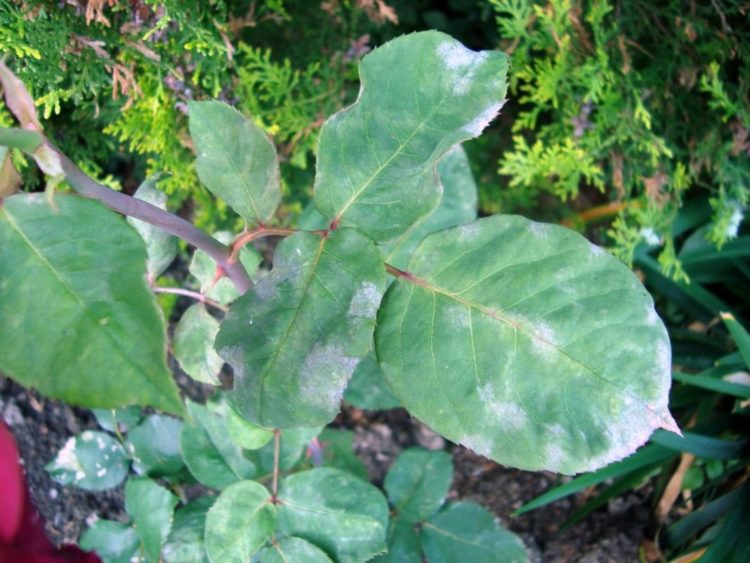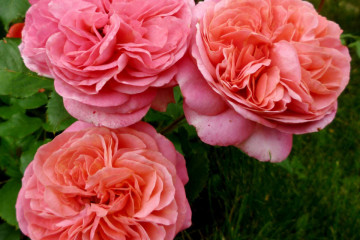Rose Novalis (Novalis) - description of a variety of unusual color
In 2010, scientists created a rose bush with an unusual blue hue. He was given the name - rose Novalis. The culture is unusual not only in color, but also in large dense buds. Below is a detailed description of the variety, as well as how to grow it in Russia.
Rosa Novalis - what is this variety
The name rose Novalis is associated with the name of the poet G.F. von Hardenberg. He worked under the pseudonym Novalis. From the Latin language, this translates as "the one who brings something new." In Hardenberg's works, blue symbolized an ideal that cannot be achieved.
Scientists from the Cordes corporation, located in Germany, are the authors of the newest Floribunda Novalis rose variety.
This variety differs from other types:
- the size of their inflorescences;
- the stem contains several buds;
- flowering occurs continuously;
- can recover in a short time after frost;
- cultivation is possible both in the garden and in a pot.
Short description
Description of the floribunda rose variety:
- flowering occurs magnificently and abundantly;
- several subtypes of the variety are presented. One of them is Novalis;
- buds are simple, semi-double and double. Their shape can be goblet and flat;
- bud sizes from 4 to 9 cm;
- flowering takes place in several approaches. Several buds open. There are species with continuous flowering.
Description of rose Novalis:
- belongs to the floribunda class;
- a bud in the form of a glass;
- the color is dark purple, after full blooming, pale lilac;
- when the flower withers, the petals turn gray;
- bud size 8-10 cm;
- the maximum number of petals is 60 pcs.;
- the bush grows very densely;
- shoots are upright;
- bush width 80 cm, height 90 cm;
- flowering takes place for a long time and continuously;
- the variety is resistant to diseases (powdery mildew and spotting) and frost. Can withstand temperatures up to −23 ° С;
- average sediment tolerance.
Advantages and disadvantages
The disadvantages of this variety are:
- unpretentiousness;
- undemanding to the type of soil;
- adapts to a variety of living conditions;
- flowering occurs for a long period;
- resistant to droughts, frosts, pests and diseases.
Of the shortcomings, only a weakly pronounced aroma is distinguished.
Use in landscape design
The variety in question is suitable for any landscape style. With it, you can create a beautiful hedge. It will perfectly decorate paths and curbs. Having planted a rose in a pot, you can arrange a gazebo for her. A lush bush that grows alone will also look very good.
Growing a flower
Planting and growing Novalis should not be too difficult.
Landing types
The rose can be planted by seeds, cuttings or budding. The most suitable methods are cuttings and seedlings. To choose a seedling, you need to determine which is better: grafted or self-rooted.
The roots of seedlings are of two types: open and closed. In both cases, it is necessary to look to ensure that they are intact, there should be no spots on the leaves, and the bark should not be damaged. In the spring, the buds should be dormant. If the seedlings were purchased in the autumn, then they can be stored in the basement, sprinkled with wet sand.
The cut root should be creamy.
Landing time
The best time to plant a rose is mid-April - late May. In the southern regions, planting can be carried out in September and October. If the plant is planted in autumn, then it will have time to take root before frost.
A place
The place must meet the following requirements:
- be well lit;
- have a slight shadow;
- no thick grass;
- groundwater must run deep.
Soil and flower preparation
Before planting, it is required to remove damaged roots, and also cut too long to 30-35 cm.
If there is a lot of clay in the soil, then it is mixed with river sand and compost. Bone meal and superphosphate are also added. If the soil is sandy, add clay soil and humus. Dolomite flour and wood ash are used to reduce acidity. To increase the acidity, manure or peat is added.
Landing procedure
To plant a flower, you must do the following:
- Dig a hole 60 cm deep.
- Pour fertile soil to the bottom.
- Place the seedling so that the root collar is 3 cm below ground level.
- Spread out the roots and cover them with soil.
- Gently compact the soil around the flower.
- Water the bush.
- Mulch with peat.
Care
Caring for Novalis also does not require much effort.
Watering mode
It is necessary to make a shaft near the plant so that the liquid does not spread during watering. It is better to water with settled water. One bucket per bush.
Watering is carried out once a week, and in hot weather - twice. In the autumn, the bushes are not watered except in the southern regions.
Top dressing
They begin to feed the flower only from the second year of life. The composition of mineral fertilizers is influenced by the flowering period. At the very peak, nitrogen fertilizing is applied, and in the fall - phosphorus-potassium.
Pruning and replanting
Combined pruning is required for the Novalis variety. For young bushes, it should be lighter than for old ones. Home is carried out in the spring, after the buds have already blossomed. Pruning is done over the fifth bud. This will allow the plant to bloom earlier.
More pruning is done on older shrubs to rejuvenate them. Pruning is carried out over the second bud. These actions will ensure continuous flowering.
In autumn, sanitary pruning is carried out: foliage and unnecessary shoots are removed.
The transplant process is carried out as follows:
- Prepare the pit: width 50 cm, depth 50 cm.
- Remove the topsoil.
- Put soil, compost and humus on the bottom.
- Before planting, update the roots by 1-2 cm. Hold them in a growth stimulator.
- Set the root collar 3-5 cm below ground level.
- Tamp the soil near the bush.
- Drizzle.
- Sprinkle the circle with damp earth.
Wintering features
Before covering the rose, you must remove the fallen leaves. Then you need to cut the bush to 40 cm and cover it with soil by 30 cm. Then cover the bush with spruce branches or oak leaves.
Bloom
Novalis blooms very densely throughout the season. The flowering time depends on the climatic conditions of growth.
Care before and after the appearance of buds
Before the buds appear, you must:
- Trim the bush.
- Drizzle with sodium humate solution. Use 2 liters of solution for one bush. At 1 st.a spoonful of the substance is taken 40 liters of water.
- After the first flowering, it is necessary to add mineral dressing.
- If a rose is planted in spring, then it is not allowed to bloom. To do this, remove all the buds so that the forces of the flower are directed to the formation of roots. By the fall, you can leave a few buds.
After flowering, the faded flowers are removed and pruned 5-7 cm above the bud.
What to do if it does not bloom
Possible reasons why a plant may not bloom are:
- the landing site was chosen incorrectly;
- it is possible that the rose is oppressed by neighboring plants (lilac, chubushnik, etc.);
- the rose is heavily pruned (only a light procedure is performed in the spring);
- flowers that have withered have not been removed.
Reproduction
Reproduction of roses is carried out by cuttings. This is done after the first wave of flowering.
It is necessary to choose a young and strong bush. Then it is required to cut the cuttings 8 cm long. The cut is made straight from above, and from below at an angle of 45 °. Plants are planted in an inclined form. The depth of the pits is 15 cm. There should be a distance of at least 30 cm between the cuttings. Cover the cuttings halfway with soil.
Diseases and pests
Powdery mildew is the most common disease. With her, a white bloom appears. Provoked by high humidity. The contaminated parts are removed and incinerated. The bush is sprayed with a solution of ash, mullein, copper sulfate.
Black spot is when black and brown spots appear on the leaves. Warm and humid weather provokes, as well as a lack of potassium. The affected parts are removed and incinerated. The plant is sprayed with Bordeaux liquid or copper-soap emulsion.
The rosacea scale insect is an insect that looks like a scale. Parasites lead to stunted growth and leaf fall. The plant is treated with soap-garlic or soap-onion solution.
Rose Novalis is an unusually beautiful flower. It is resistant to disease and easy to care for. Having planted it, not a single grower will regret what has been done, since the spectacular color of the buds is worth it.





















